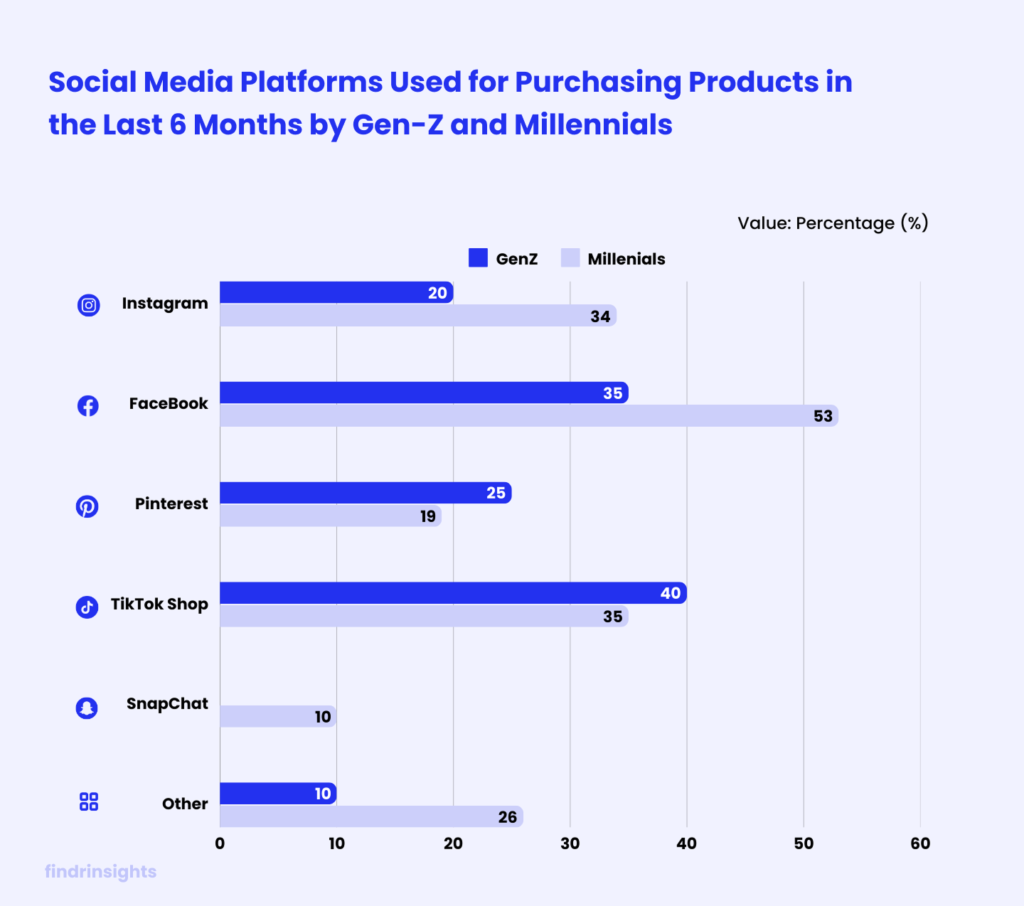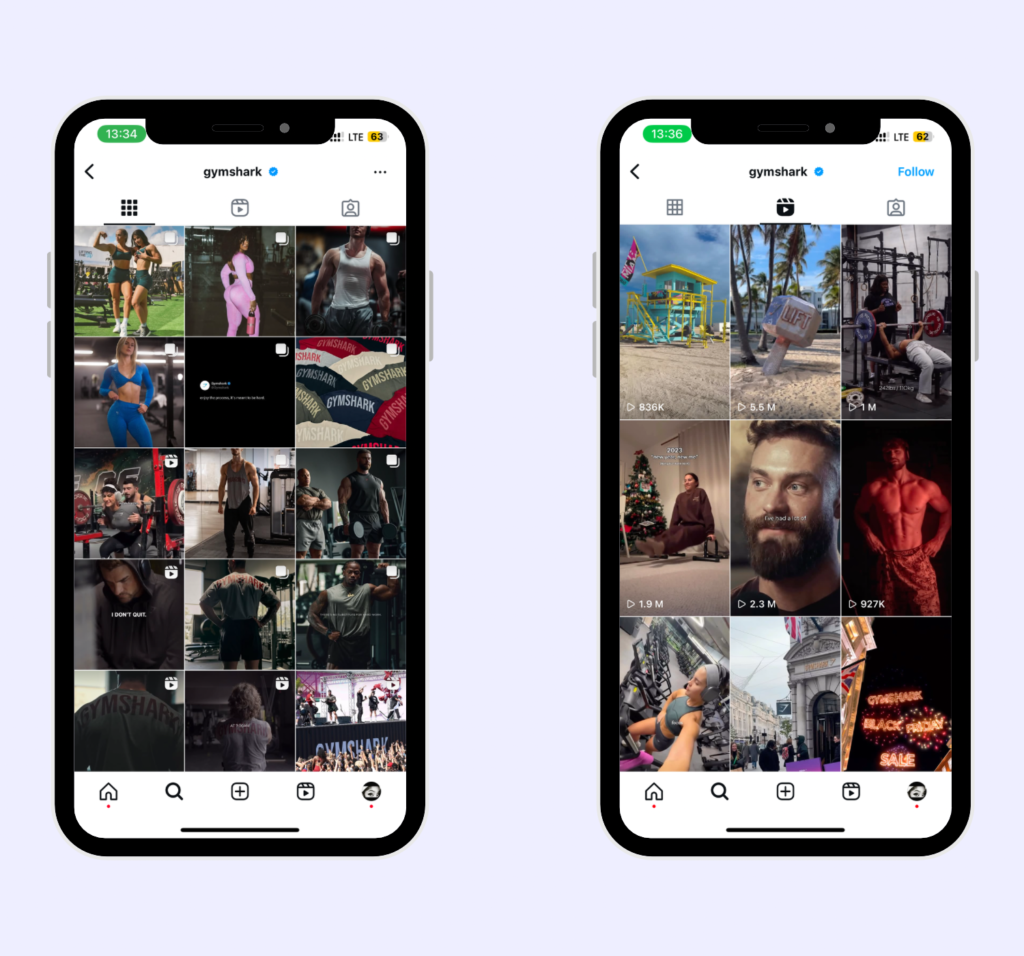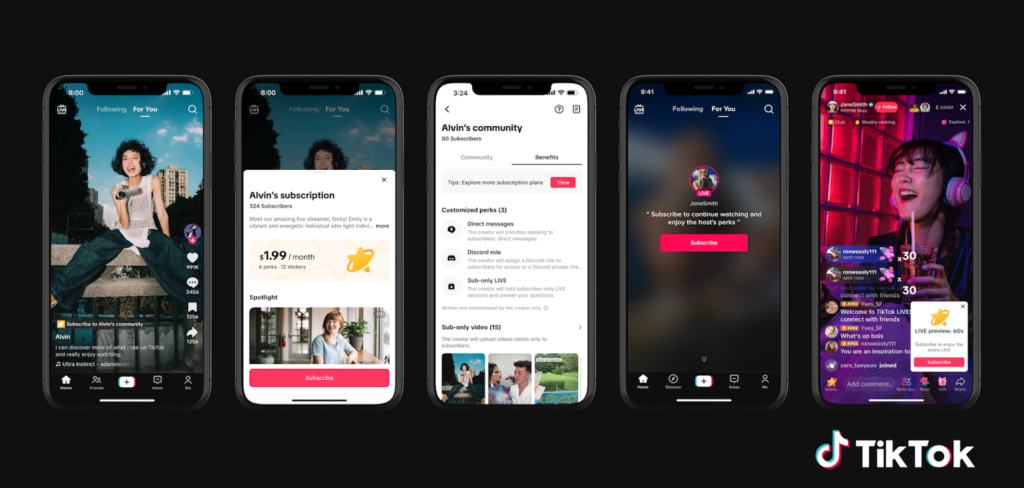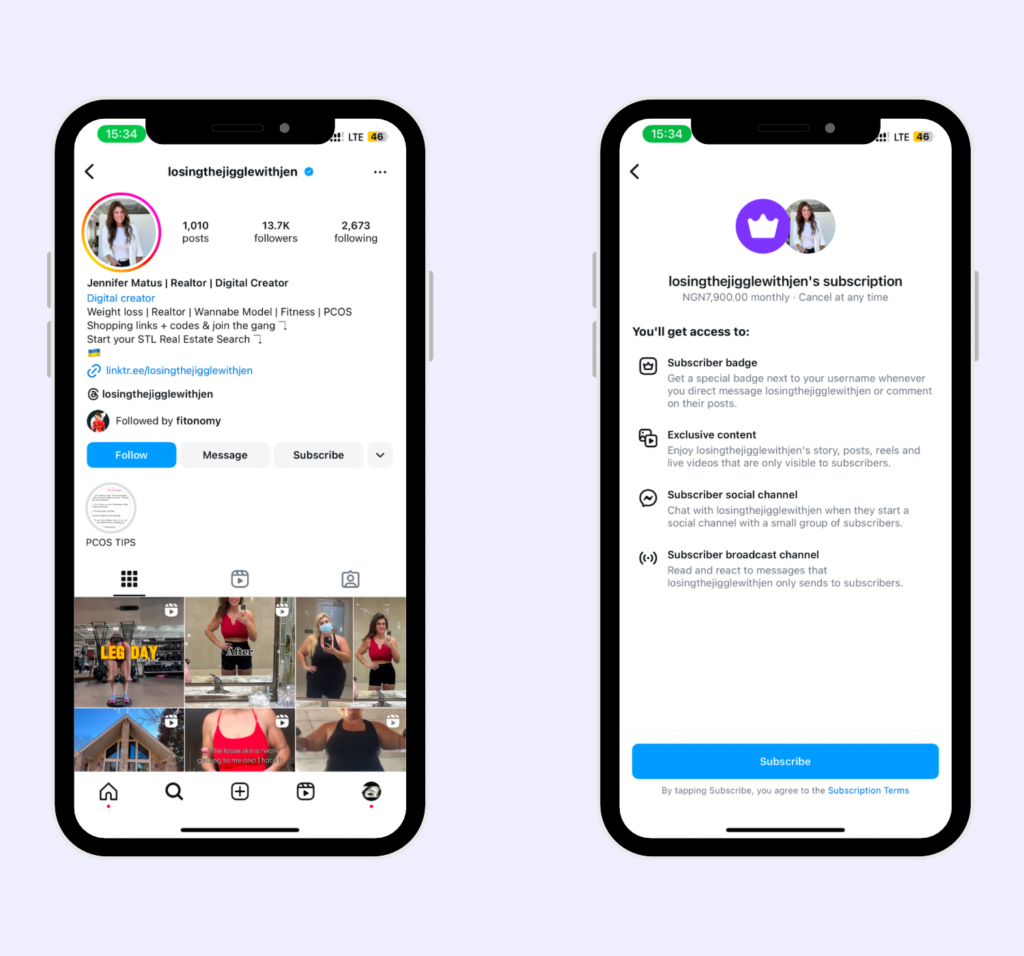
Remember when social media was just for sharing photos and updates? Now, it’s one of the biggest shopping destinations.
With 4 billion people shopping directly on social media, businesses are integrating these platforms into their websites to create a more seamless shopping experience.
Social commerce is expected to surpass $1 trillion in global sales by 2028, growing at a 13.7% annual rate.
In 2025, expect even more brands to turn their posts into sales and influencers to act as virtual storefronts. If you’re curious about where social commerce is headed, here are the key social commerce trends in 2025.
Table of Contents
1. AI-Powered Social Shopping is Revolutionizing eCommerce

Social commerce allows consumers to buy products directly through social media posts, stories, live streams, or AR experiences—eliminating the need for a separate online store. AI-powered social shopping is transforming how people shop in 2025.
AI analyzes user data—including behavior, interests, and past purchases—to recommend relevant products and create highly personalized shopping experiences.
AI product recommendations and chatbot support are features that help improve personalized shopping experiences for online shoppers with 36% of them using chatbots to answer questions and reduce the need for human customer service.
Beyond recommendations and chatbots, other AI technologies are driving social commerce growth. These include:

- Social Media Search Engines: 46% of Gen Z and 35% of millennials use social media as their primary search tool for food, beauty, fashion, and entertainment. AI-powered tools like Pinterest Lens and Meta AI make searching for products and information easier.
- AI Influencer Marketing: AI helps brands identify and connect with the right influencers, making influencer marketing more efficient. Platforms like Instagram and TikTok now use AI to match brands with relevant influencers. AI avatars are also emerging, reducing the need for expensive human content creators.
- AI-Driven Livestream Shopping: AI enhances live shopping by recommending products in real time, creating a more personalized experience without requiring endless scrolling.
By 2025, AI will make social commerce faster, more seamless, and more tailored to consumer preferences, with AI-driven sales expected to account for 79.6% of eCommerce sales in the US.
If you’re selling online, now is the time to embrace AI to stay ahead of the competition.
2. Livestream Shopping is Becoming the New Retail Channel

Finding and collaborating with the right social media influencers can be challenging and costly. To overcome this, brands are turning to live-stream shopping, a retail trend set to grow significantly in 2025.
However, brands aren’t the only ones leveraging this retail trend. Influencers and content creators now host live shopping events, using their credibility and close connection with followers to increase engagement and conversions.
In China, top livestreamer and influencer Austin Li (the “Lipstick King”) made millions of dollars in a single stream selling 15,000 lipsticks in five minutes.
Western platforms are quickly adopting this trend, with TikTok Shop, Instagram Live, and YouTube Shopping partnering with influencers to promote products in real time.
In 2025, almost every major social platform will have live shopping features. TikTok Shop is expanding globally, YouTube Shopping is integrating with Shorts, and Instagram Live is refining its in-app checkout for a smoother purchasing experience.
Even Pinterest has joined the trend, offering shoppable streaming features that allow brands to showcase products with real-time demos and instant purchasing options.
Another emerging trend is the integration of augmented reality (AR) and virtual reality (VR) to enhance live-stream shopping, making it even more immersive.
More brands will use AR filters to let customers try on clothes, makeup, or accessories while watching live streams.
Meta is also advancing VR shopping in the metaverse, allowing users to explore virtual stores and interact with products before buying.

Live shopping is becoming more interactive through gamification.
Limited-time offers, spin-to-win discounts, and exclusive giveaways keep viewers engaged and encourage impulse purchases.
Meanwhile, major retailers like Walmart and Nordstrom are launching their live shopping channels, reducing reliance on third-party platforms.
As AI, AR, and influencer marketing continue to evolve, brands that embrace live-stream shopping early will gain a competitive edge in this rapidly growing retail space.
3. Beyond TikTok & Instagram: Emerging Social Commerce Platforms

When you think about social commerce, TikTok and Instagram are likely the first platforms that come to mind. But they aren’t the only ones shaping online shopping.
New platforms like Whatnot and Pinterest are giving consumers more ways to discover and buy products directly through social media.
Whatnot, a live-streaming auction app, is taking off in the U.S. It’s already worth billions and has turned live social shopping into an interactive experience where creators auction products in real time.
Pinterest has evolved beyond just a vision board platform—it’s now a comprehensive shopping hub.
Features like Pinterest Shopping Spotlights and Shoppable Pins let users purchase products without leaving the app. This is especially valuable for beauty and fashion brands looking to increase sales.

At the same time, YouTube shopping is also expanding quickly. With over 2 billion users, YouTube now allows creators to tag products in videos, making it easier for viewers to shop directly from content
4. User-Generated Content (UGC) Boosts Social Shopping Conversions

When you shop online, do you trust a brand’s ad or a customer’s experience? If you’re like most people, you probably rely on customer reviews, videos, and testimonials before making a purchase.
That’s why user-generated content (UGC) drives more conversions in social shopping. UGC—whether it’s unboxing videos, customer testimonials, or “TikTok made me buy it” trends—makes products feel more authentic and trustworthy.
Shoppers want to see how an item looks, feels, and functions before making a purchase, which is why platforms like TikTok, Instagram, and YouTube are filled with real product demos.
Brands that encourage UGC experience higher engagement and sales. According to Stackla, 79% of consumers say UGC influences their buying decisions more than brand-created content.
A great example is Gymshark, the fitness apparel brand that grew massively by resharing customer workout videos, making its users part of its marketing. Its Instagram feed showcases photos of fitness influencers wearing the brand’s activewear.
As consumer attention spans shrink, the demand for engaging short-form videos on platforms like TikTok and Instagram reels will continue to influence user-generated content creation in 2025.
5. Augmented Reality (AR) Creates Immersive Shopping Experience

Screenshot of Nike’s AR shopping lens on Snapchat
Have you ever hesitated to buy something online because you weren’t sure how it would look in real life? Augmented reality (AR) solves that problem by letting you try products before you buy them.
In 2025, AR is changing how we shop, making online purchases more interactive and giving shoppers more confidence.
With AR, you can see how sunglasses fit your face, test different lipstick shades, or place virtual furniture in your living room before buying.
Brands like Sephora, IKEA, Nike, and Warby Parker already offer AR-powered try-ons, helping shoppers make better decisions.
According to Shopify, products with AR experiences see a 94% higher conversion rate than those without.
Social platforms are also integrating AR and VR to make the shopping experience engaging.
Snapchat’s AR filters let you try on clothes and accessories instantly, while TikTok is rolling out AR shopping features that let you test products directly in the app.
Even smaller brands are integrating AR-powered shopping to engage customers and reduce returns.
AI is transforming AR and VR, making them faster and more immersive. AI generates 3D environments quickly, reducing the time needed for manual design. This also reduces reliance on 3D artists, lowering production costs.

AI-powered gesture recognition in devices like Orion glasses is more advanced than ever. It tracks body movements, creating a more immersive and natural user experience.
AI also enhances object recognition in AR, as seen with Google Lens, allowing users to identify products and retrieve information instantly.
From online shopping to workspaces and entertainment, AI-driven AR and VR are making digital experiences more immersive and efficient.
6. One-Click Checkout & Social Wallets Reduce Purchase Barriers

We’ve all been there—you find the perfect product, add it to your cart, and then… the checkout process ruins the excitement.
Too many steps, too many forms, and before you know it, you abandon the cart.
That’s exactly what your customers go through, which is why one-click checkout and social wallets are essential.
With one-click checkout, customers avoid the hassle. Their payment details are saved, so future purchases take just one tap. In 2025, new one-click checkout systems will make transactions even faster and more convenient.
Self-serve returns are improving the post-purchase experience. Instead of contacting support, shoppers can now initiate and track returns online.
A 2022 NICE Digital-First Customer Experience report found that 81% of consumers want more self-service options, yet many businesses fail to meet this demand.
Platforms like Shopify offer built-in self-service return features, helping retailers automate returns while keeping customers satisfied.
Email carts are also transforming checkouts. Customers can receive a personalized cart link via email, allowing them to complete purchases later without starting over.
Meanwhile, showrooming—where customers visit physical stores to experience products before buying online—is helping retailers reduce inventory while still driving sales.
Many customers still prefer credit cards for online purchases, while digital wallets like PayPal, Google Pay, and Apple Pay are the second most popular choice for a frictionless checkout.
At the same time, nearly 46% of shoppers use a brand’s mobile app to browse or shop, mainly for rewards, points, and personalized discounts.
Big brands like Starbucks and Walmart use mobile apps to simplify checkout and enhance customer loyalty. Walmart’s Scan & Go allows customers to scan items as they shop and pay instantly through the app—no waiting in line.
If you run a business, offering a mobile app could keep customers coming back.
These innovations reflect the future of checkout, improving speed, convenience, and the overall shopping experience.
7. Subscription-Based Social Commerce Grows in Popularity

Social media platforms like Instagram and TikTok, were primarily used for social interactions, but I’ve noticed these platforms are now integrating subscription-based features that allow creators and brands to monetize their following, where subscribed users gain access to exclusive content or experiences.
These could be monthly product boxes, member-only discounts, or early-bird access to sales.
As these platforms embrace subscription-based features, we’re experiencing the rise of an emerging trend of social subscription economy, where creators, brands, and influencers can turn their audience into paying subscribers.

For businesses, TikTok’s “LIVE Subscriptions” or Instagram’s “Subscriptions” for exclusive content, especially as live streaming shopping is becoming the new retail channel, creates steady, predictable revenue and stronger customer loyalty.
With millions of active users engaging with creators daily on social media, the social subscription business model is growing at a profound rate, and brands need to leverage this opportunity for their business in 2025.
Conclusion
As 82% of consumers continue to use social media to discover products on the platforms, brands need to leverage social media to turn that browsing into buying habits.
Social commerce is becoming the future of online shopping. AI-driven recommendations, livestream selling, and AR-powered try-ons are making it easier for customers to discover and buy products without ever leaving your favorite apps.
If you want to expand your reach, build brand loyalty, and drive long-term growth, investing in social commerce isn’t optional—it’s essential.
Social Commerce Trends FAQ
How does social commerce differ from eCommerce?
Social commerce is a subset of eCommerce that involves the promotion and selling of products through social media, so active users can buy items without having to leave the platform.
In contrast, eCommerce is a broad term that refers to the buying and selling of products online through an eCommerce website, a social media page, or an online marketplace.
How does social commerce work?
Social commerce allows customers to shop directly through social media platforms without leaving the app.
Instead of visiting a stand-alone website, they discover, browse, and buy products through shoppable posts, targeted ads, or livestream shopping.
What are some examples that define social commerce?
Instagram shopping, Pinterest shopping, WhatsApp business, Facebook Marketplace, and TikTok shops are popular examples of social commerce.
These examples allow users to discover and purchase products directly on the platform.
What is the prediction of social commerce?
Social commerce is experiencing rapid growth and is set to become a major player in global e-commerce growth.
In 2023, the global social commerce market was valued at approximately $570 billion.
Projections indicate a compound annual growth rate (CAGR) of 13.7% from 2023 to 2028, with the market expected to surpass $1 trillion by 2028.




